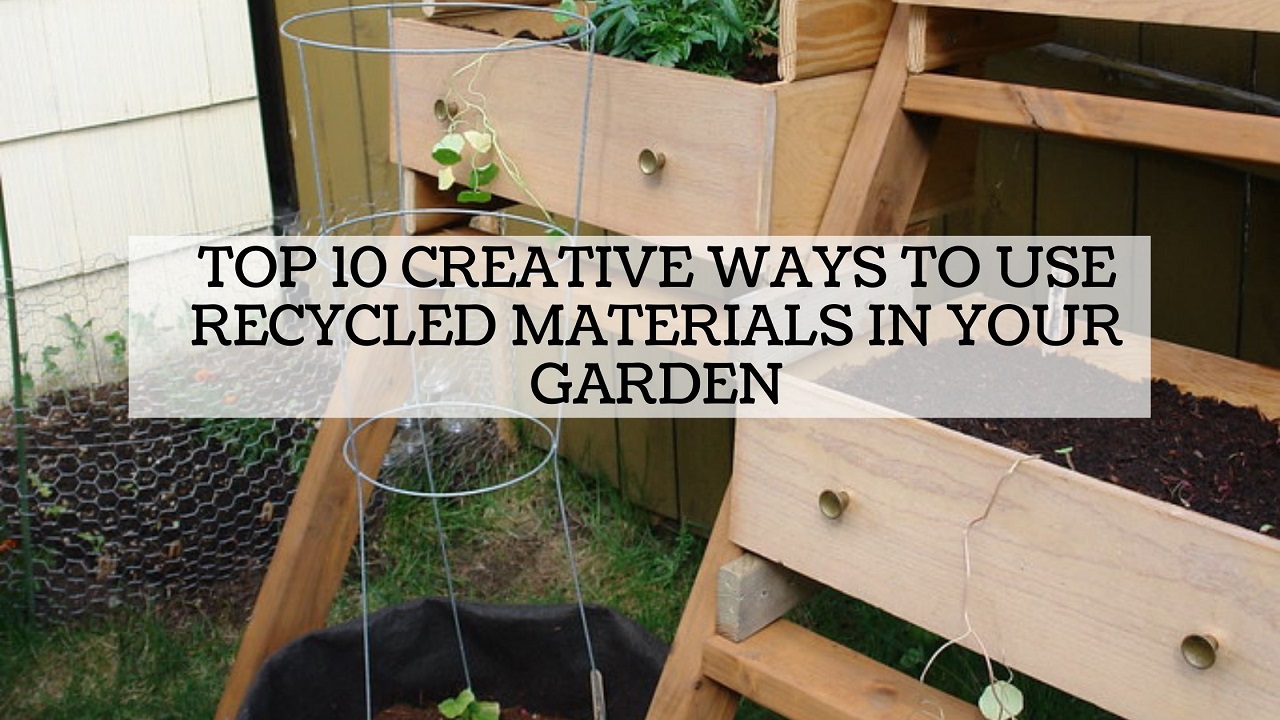Gardening is not just about planting seeds and watching them grow; it’s an art, a science, and a way to connect with nature. One of the most exciting trends in gardening is the use of recycled materials. Not only does this approach save money, but it also contributes to a healthier planet. In this post, we’ll explore 5 creative ways to use recycled materials in your garden.
Tin Can Herb Planters

Transform your old tin cans into charming herb planters. This idea is not only practical but also adds a vintage touch to your garden. Here’s how you can do it:
- Clean the cans: Make sure to remove all labels and clean the cans thoroughly.
- Paint: Give them a fresh coat of paint or leave them rustic, depending on your garden’s aesthetic.
- Drill holes: Don’t forget to drill drainage holes at the bottom.
- Plant herbs: Plant your favorite herbs like basil, thyme, or mint.
Bottle Cap Mosaic
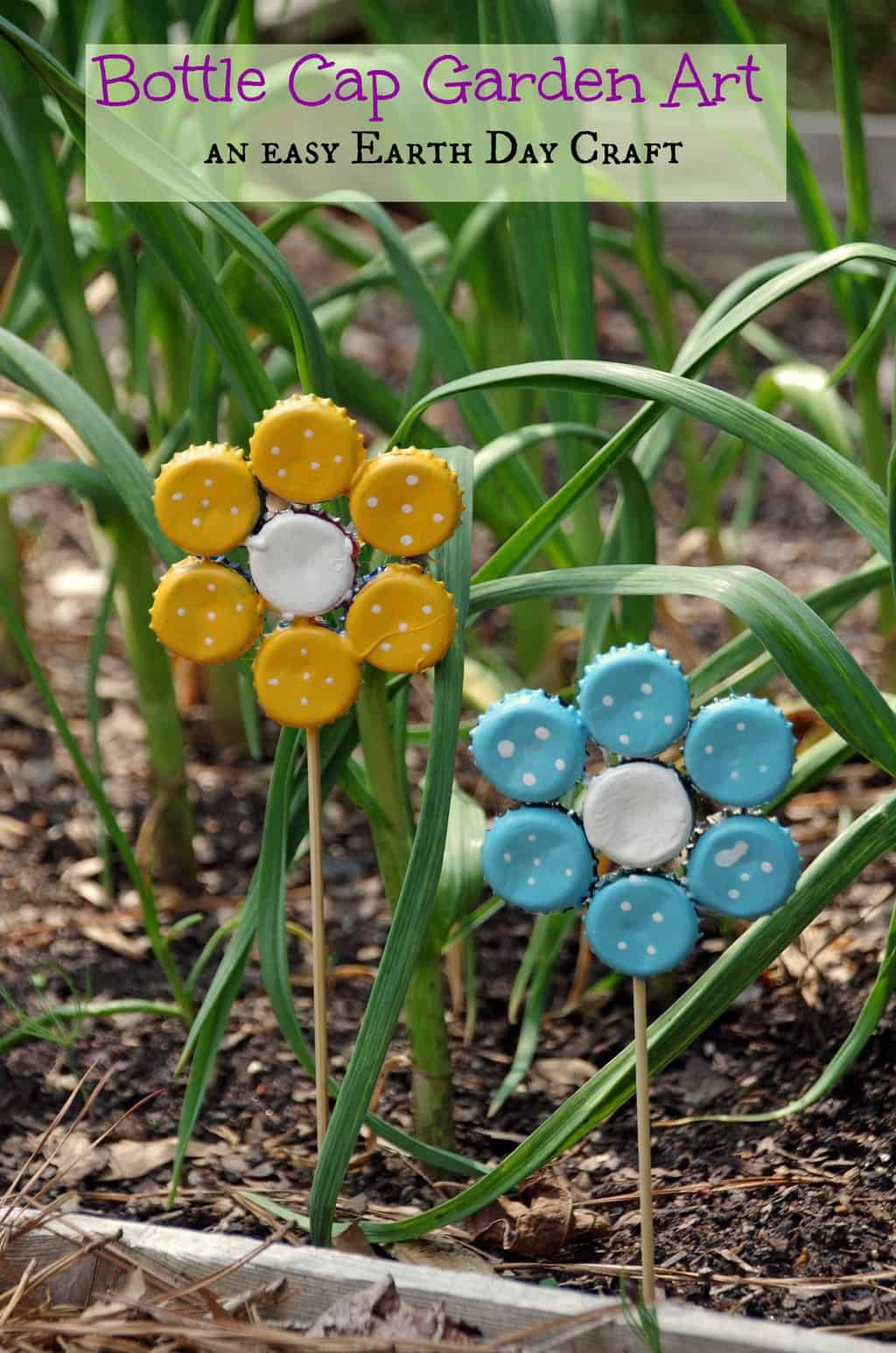
Create a stunning mosaic for your garden path using bottle caps. This garden art using recycled materials is both unique and eye-catching.
- Collect caps: Start saving caps from bottles, asking friends and family to contribute.
- Design your mosaic: Plan out a design on paper first.
- Prepare the surface: Choose a spot in your garden and prepare the surface.
- Install: Using a strong adhesive, place the caps according to your design.
Pallet Garden Bed
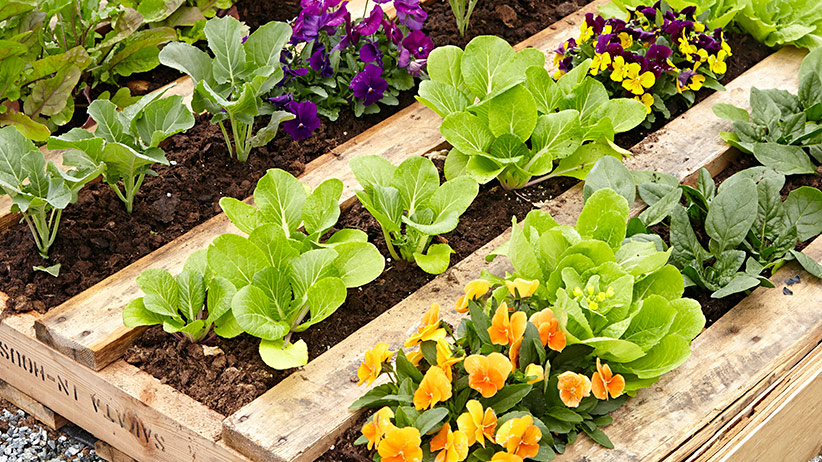
Wooden pallets are one of the 5 sustainable materials you can easily repurpose for your garden.
- Find pallets: Look for unused pallets at local stores or warehouses.
- Treat the wood: Make sure to treat the wood to make it safe for planting.
- Fill with soil and plants: Create a raised bed by filling the pallet with soil and plant your seeds or seedlings.
Old Tires as Planters
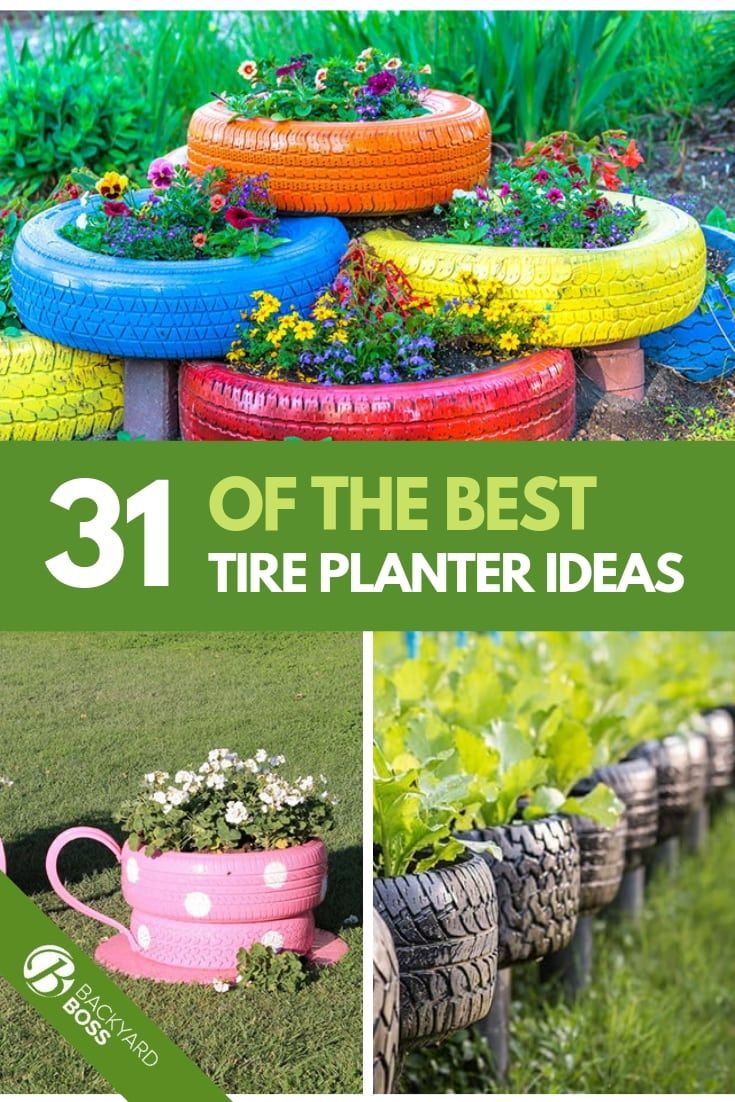
Old tires can be turned into large, durable planters for your garden.
- Clean and paint: Clean the tires and paint them in bright or pastel colors.
- Choose a spot: Place them in your garden, filling them with soil.
- Plant: They are perfect for growing vegetables, flowers, or even small shrubs.
Glass Jar Terrariums
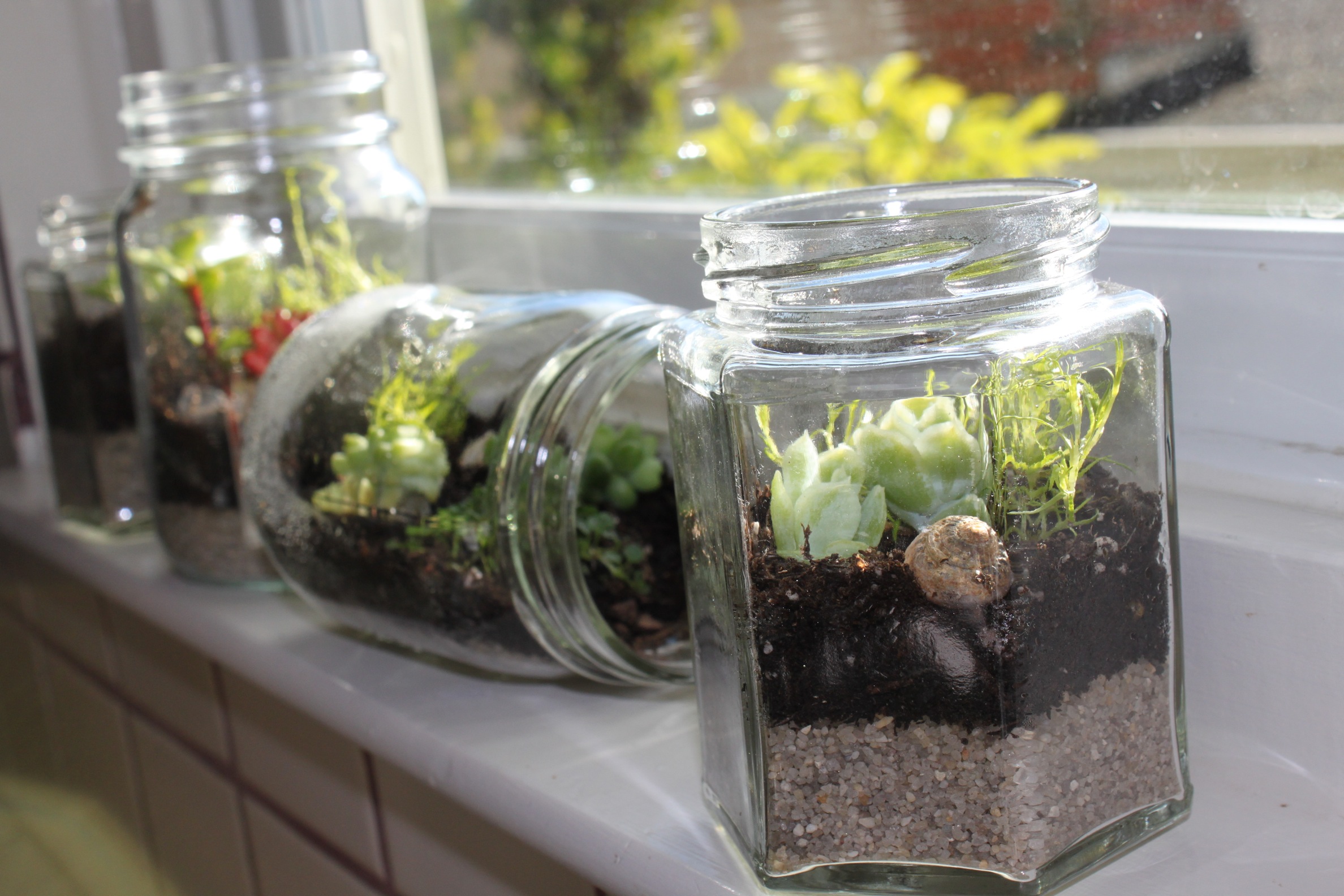
Reuse glass jars to create mini terrariums, perfect for small spaces.
- Gather jars: Collect various sizes of glass jars.
- Add layers: Start with a layer of pebbles, then add soil.
- Plant: Choose small plants that thrive in humid environments.
The Benefits of Using Recycled Materials in Gardening
Incorporating recycled materials into your garden isn’t just about aesthetics. It’s a practical approach that offers several benefits:
- Sustainability: By reusing materials, you’re reducing waste and conserving resources.
- Cost-Effective: Most recycled items are free or cost very little, helping you save money.
- Creativity: Recycling encourages you to think creatively, turning ordinary objects into unique garden features.
Tips for Successful Gardening with Recycled Materials
To ensure your garden thrives with these recycled additions, keep the following tips in mind:
Safety First: Ensure the materials you use are safe and free from harmful chemicals, especially when growing edibles.
Drainage: Good drainage is essential, so make sure containers have holes to prevent waterlogging.
Appropriate Material: Choose materials that suit the plants you’re growing. For example, deeper containers for root vegetables.
Aesthetic Balance: While creativity is key, strive for a balance that complements your overall garden design.
Engaging the Community
Gardening with recycled materials can be a communal effort. Here’s how you can engage others:
- Workshops: Organize local workshops on creating recycled garden art.
- Material Swaps: Host swap events for gardeners to exchange materials.
- Community Projects: Collaborate on a community garden using recycled items.
The Environmental Impact

By choosing to garden with recycled materials, you’re making a positive impact on the environment:
- Reduced Landfill Waste: Every item reused is one less in the landfill.
- Lower Carbon Footprint: Recycling materials locally reduces the carbon footprint associated with new garden products.
Expanding Beyond the Garden
The concept of using recycled materials can extend beyond the garden. Consider:
- Indoor Planters: Small recycled containers can be used for indoor plants.
- Educational Projects: Schools can use recycled materials for educational garden projects.
- Art Installations: Create art installations that highlight the beauty and utility of recycled materials.
Incorporating Wildlife-Friendly Features

When using recycled materials in your garden, consider how they can benefit local wildlife. For example:
- Bird Feeders from Bottles: Plastic bottles can be transformed into bird feeders, helping to attract a variety of birds to your garden.
- Bee Hotels: Old wood or bamboo can be used to create bee hotels, providing essential nesting sites for solitary bees.
Maintenance and Upkeep
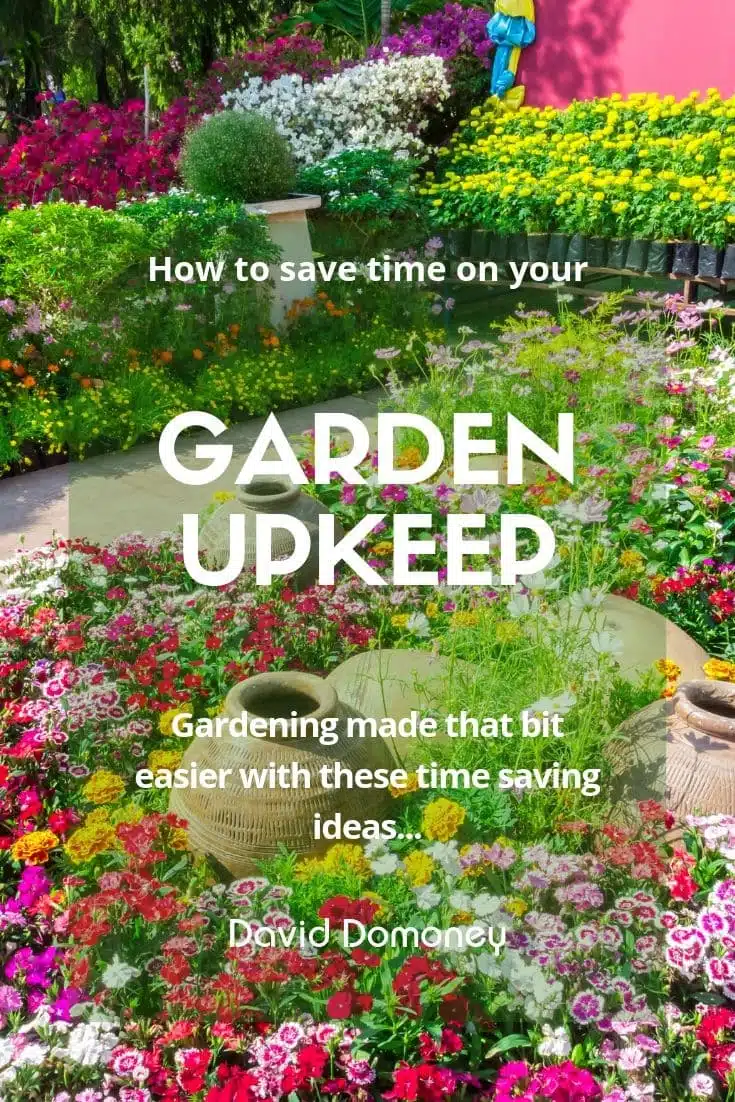
Recycled materials in your garden will require maintenance. Here are some tips:
- Regular Cleaning: Keep your recycled containers clean to prevent the spread of diseases.
- Weatherproofing: Certain materials may need to be treated to withstand outdoor conditions.
- Updating: Over time, you might need to replace or refresh some of the recycled items.
Showcasing Your Garden
Once your garden is thriving with recycled materials, it’s time to showcase it:
- Social Media: Share pictures of your garden on social media platforms. Use hashtags like #RecycledGarden to reach a wider audience.
- Garden Tours: Host garden tours to inspire others in your community.
- Blogging: Consider starting a garden blog to document your journey and share tips.
Challenges and Solutions
While using recycled materials is beneficial, it can come with challenges:
- Pest Control: Ensure that your recycled containers don’t become breeding grounds for pests.
- Aesthetic Concerns: Some recycled materials might look out of place. Use paint or other decorative elements to create a cohesive look.
Seasonal Adaptations
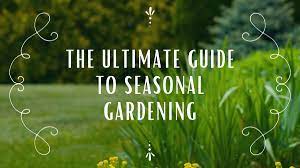
Your garden can change with the seasons, and so can your use of recycled materials:
- Winter: Use clear plastic bottles to create mini-greenhouses for your plants.
- Spring: Refresh your garden with new planters or add seasonal decorations.
- Summer: Focus on creating shady spots using old sheets or curtains.
- Autumn: Use fallen leaves as mulch or for creating compost.
The Future of Recycled Gardening
Looking ahead, the trend of using recycled materials in gardening is only going to grow:
- Innovation in Recycling: Stay updated with new recycling techniques and materials that can be incorporated into gardening.
- Sustainability Goals: Consider setting personal or community sustainability goals related to recycled gardening.
Conclusion
“5 Creative Ways to Use Recycled Materials in Your Garden” is more than just a set of instructions; it’s a philosophy that intertwines the love for gardening with the responsibility towards our planet. As you embark on this journey, remember that each small step contributes to a larger movement towards sustainability. Your garden is not just a space for plants to grow; it’s a canvas for creativity, a sanctuary for wildlife, and a testament to the possibilities of recycling.
For more gardening insights, innovative ideas, and a supportive community, be sure to visit Our Gardening Blog. Let’s grow our gardens and our commitment to the planet together.
